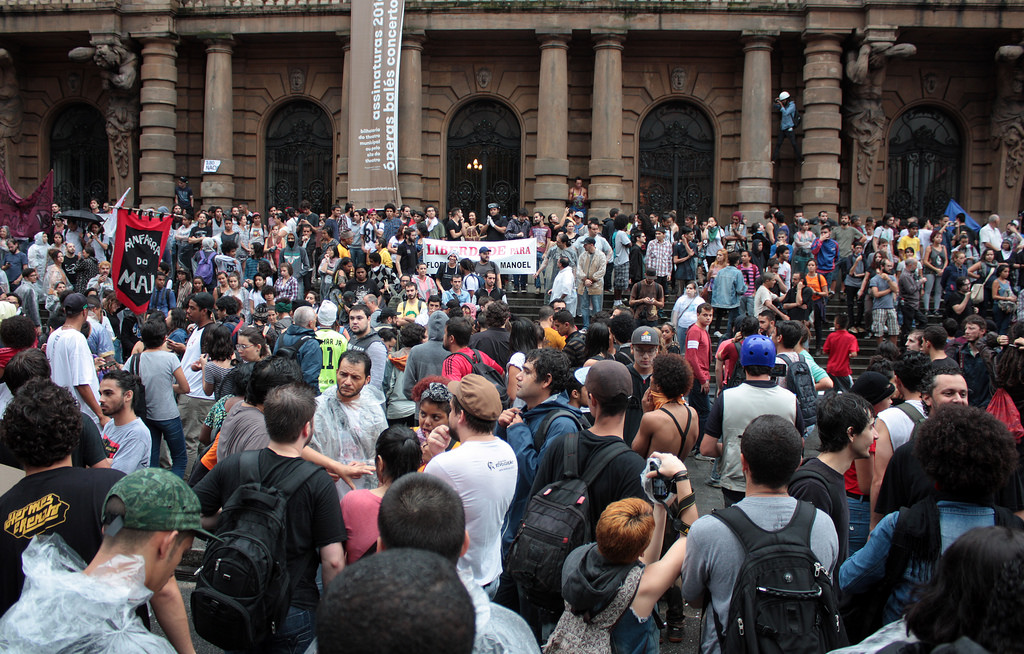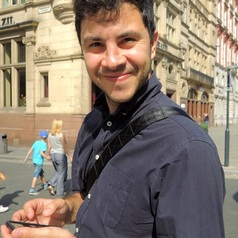Contrary to how it may seem today mass protests in Brazil were until recently a relatively rare occurrence. But since 2011, the country seems to have entered a “contentious cycle”, when repeated and growing mobilisations follow each other in a short period of time.
Discontent has now reached the point where several hundred thousand people are on the move in Brasilia, São Paulo and Rio de Janeiro, calling for the impeachment (or resignation, whatever comes first) of the president, Dilma Rousseff.
After inheriting the presidency from Lula Da Silva, who had left office in 2011 with record levels of approval and the endorsement of Barack Obama as “the most popular politician on Earth”, Rousseff – Lula’s former chief of staff – also inherited a suite of increasingly urgent problems. The slowdown of the Brazilian economy – so buoyant in the 2000s – was already noticeable. The administration was coming under pressure to change course by the financial establishment, the conservative media and some of its right-wing allies in congress, where Rousseff’s party, the Workers Party (PT), controls only about a third of votes.
This situation produced what the London-based Brazilian economist Saad-Filho called a “confluence of dissatisfactions”, between students and left-wing activists and various categories of workers, who were joined by middle-class people in feeling squeezed from below and disenfranchised after a decade of PT rule.
To compound this, after years of scandals that Lula had been able to manage politically, disenchantment at corruption had become widespread and, during Brazil’s independence day celebrations in September 2011, mass protests erupted. More than 30,000 people marched in the streets of Brasilia, calling for the end of secret voting in congress and the approval of anti-corruption and transparency laws. But these protests were relatively small and non-partisan, and did not directly target the government. In fact, Rousseff had supported the fight against corruption, firing accused ministers and facilitating the work of prosecutors. But there was a catch: she had inherited Lula’s cabinet – and many of the officials under investigation continued to occupy high positions in her government. It was a powder keg.
Explosion of discontent
This powder keg exploded in 2013, in a viral episode that within a few days went from a small demonstration against the rise of bus fares in São Paulo to millions of people taking the streets through the country, social media campaigns, neo-anarchist groups looting stores, police repression and the world’s media wondering about what was going on in this rising power about to host the World Cup and the 2016 Olympics in Rio.
Still the protests did not centre exclusively on the president or the PT, pointing instead to the political system and the overall establishment. As a matter of fact, signs of political partisanship, either for or against the government, were often rejected by the protest movement. And, at this stage Rousseff publicly embraced the protesters’ claims and offered a number of concessions – sidestepping political opponents and the media which had initially framed protesters as “vandals” destroying public property. The government managed to contain discontent and even though Rousseff experienced sharp fall in her approval ratings, she recovered ground and was re-elected in 2014 by even a wider margin than in 2010.
Grim road ahead
But things have deteriorated. With the economy now in full recession – shrinking by almost 4% last year – and no indications of improvement on the horizon, not only has the disenchantment widened, but some sectors of the population appear to have rediscovered mass demonstrations as a political mechanism. At the same time, with her popularity reaching record lows, the anti-corruption stance of Rousseff seems to have backfired, as new revelations continue to dog her administration.
In 2014, the Petrolão (Car Wash) scandal, which involved a money-laundering scheme around Petrobras, South America’s biggest oil company, implicated more than 40 politicians from the PT and allied parties, including ministers, governors and senators as well as high executives and business people.
On March 9 the former construction mogul Marcelo Odebrecht, was sentenced to 19 years in prison for his involvement – and no one expects his to be the last head to roll. It has also been announced that, for the first time, Lula is going to be officially questioned.
The latest protests thus differ from previous ones as they assume an explicit anti-Rousseff and anti-PT orientation, taking place in the big urban centres where the PT, Lula and Rousseff have very few friends. And this time opposition parties and the conservative media smell blood and are openly accusing the government and calling for mass mobilisation of protesters.
With no election in sight – which would perhaps channel these tensions and limited resources and appeal to discipline her reluctant allies – Rousseff’s position is precarious. On March 17, when she announced Lula as her new chief of staff, triggering yet another round of demonstrations, she went on the attack, claiming that: “the shouting of the pro-coup supporters will not take me off course”. Less than an hour after this announcement a federal judge issued an injunction suspending Lula’s appointment, which created yet more havoc. The release of tapped telephone conversations, including one between Rousseff and Lula, which seemed to suggest that she had appointed him to her cabinet to spare him from arrest for corruption, have inflamed tensions even further.
Rousseff’s options are now limited and largely dependent on three factors beyond her direct control. She needs her party and allies to stand by her and block the impeachment process. She can’t afford for any further corruptions revelations to come directly her way. And perhaps most of all, her position is going to depend on whether she can mobilise her supporters.
This is the key question: after more than a decade of PT rule, a movement-friendly government that brought significant benefits to the working sectors, where are Rousseff’s supporters?
 Alejandro Milcíades Peña does not work for, consult, own shares in or receive funding from any company or organization that would benefit from this article, and has disclosed no relevant affiliations beyond the academic appointment above.
Alejandro Milcíades Peña does not work for, consult, own shares in or receive funding from any company or organization that would benefit from this article, and has disclosed no relevant affiliations beyond the academic appointment above.
Alejandro Milcíades Peña, Lecturer in International Politics, University of York
This article was originally published on The Conversation. Read the original article.




 India’s IT Sector Faces Sharp 2025 Valuation Reset as Mid-Caps Outshine Large Players
India’s IT Sector Faces Sharp 2025 Valuation Reset as Mid-Caps Outshine Large Players  UN General Assembly Demands Russia Return Ukrainian Children Amid Ongoing Conflict
UN General Assembly Demands Russia Return Ukrainian Children Amid Ongoing Conflict  Israel Receives Body of Deceased Hostage as Rafah Crossing Reopening Hinges on Final Returns
Israel Receives Body of Deceased Hostage as Rafah Crossing Reopening Hinges on Final Returns  Putin Concludes High-Level Talks With Trump Envoy on Ending Ukraine Conflict
Putin Concludes High-Level Talks With Trump Envoy on Ending Ukraine Conflict  Trump’s Name Appears on U.S. Institute of Peace Ahead of Rwanda–Congo Deal Signing
Trump’s Name Appears on U.S. Institute of Peace Ahead of Rwanda–Congo Deal Signing  China Urged to Prioritize Economy Over Territorial Ambitions, Says Taiwan’s President Lai
China Urged to Prioritize Economy Over Territorial Ambitions, Says Taiwan’s President Lai  U.S. Defense Chief Pete Hegseth Defends Controversial Second Strike on Suspected Drug-Smuggling Vessel
U.S. Defense Chief Pete Hegseth Defends Controversial Second Strike on Suspected Drug-Smuggling Vessel  Senators Warn Trump Against Unauthorized Venezuela Strike, Vow War Powers Push
Senators Warn Trump Against Unauthorized Venezuela Strike, Vow War Powers Push  New Orleans Immigration Crackdown Sparks Fear as Federal Arrests Intensify
New Orleans Immigration Crackdown Sparks Fear as Federal Arrests Intensify  Pentagon Probe Finds Hegseth’s Use of Signal Risked Exposing Sensitive Yemen Strike Details
Pentagon Probe Finds Hegseth’s Use of Signal Risked Exposing Sensitive Yemen Strike Details  U.S. Black Friday Online Spending Surges to $8.6 Billion, Boosted by Mobile Shoppers
U.S. Black Friday Online Spending Surges to $8.6 Billion, Boosted by Mobile Shoppers 





























